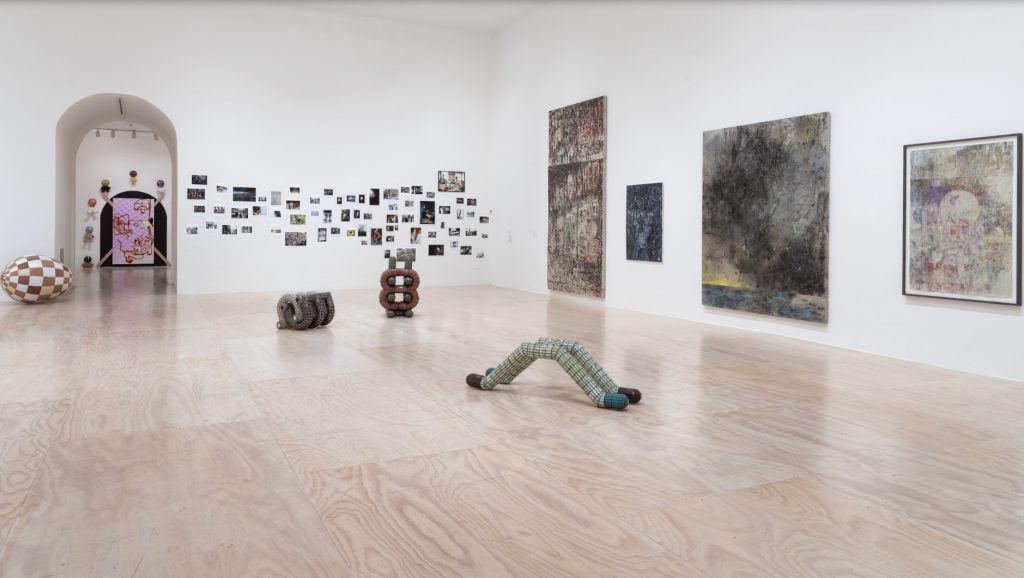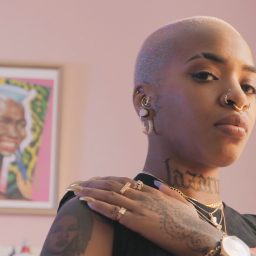Every five years, MoMA PS1 curators fan out across New York City’s five boroughs to put together “Greater New York,” a snapshot of creative practices in the Big Apple. (The show’s fifth edition was more anticipated than ever, as the pandemic delayed it by a year.)
The show has become known as a springboard for talent, offering an early boost to such artists as Cameron Rowland, Gina Beavers, Xaviera Simmons, Derrick Adams, and Cory Arcangel. This time around, it features nearly 50 international artists and collectives spanning multiple generations and a vast variety of media. The oldest artist represented in the show is Bettina Grossman, who died earlier this week at the age of 94; the youngest is Kristin Cavataro, who was born in 1992.
To help guide you through, the Artnet News Pro team has homed in on seven artists who are poised to ascend to the next stage of their careers. Here’s a primer on their work—and what you need to know to get your hands on it.
Kristi Cavataro (b. 1992)

Works by Kristi Cavataro in the foreground and on the wall at Greater New York. Image courtesy MoMA PS1. Photo: Marissa Alper.
Gallery affiliation: Ramiken, New York
Best known for: Cylindrical sculptures made with stained glass that the Bronx-based artist cuts, solders, and wraps into interlocking geometric forms. These abstract, architectural shapes—which recall subway tiles and Art Deco architecture—have a tendency to light up like prisms.
Most wanted: Domestic-size sculptures like those on view at MoMA PS1 (yes, there’s a waiting list). “Her work is incredibly labor intensive,” said Ramiken’s Mike Egan. “She cuts every panel herself. There’s a Tiffany glass feeling, an antique feeling that comes out. There’s a Utopian architecture idea and the feeling of general optimism.”
Price points: $9,000 to $18,000
Up next: Her second solo show at Ramiken, on the Lower East Side, is scheduled for fall 2022.
—Katya Kazakina
Nadia Ayari (b. 1981)
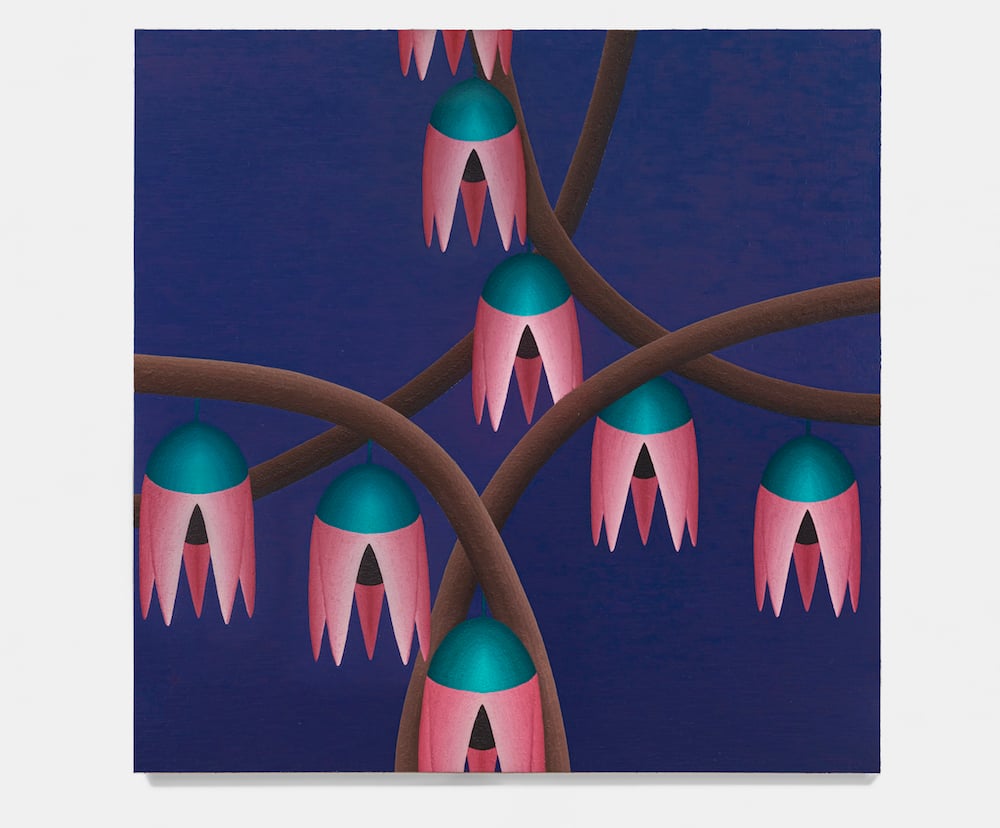
Nadia Ayari, Jetty 1 (2020). Image courtesy of the artist and Taymour Grahne Projects
Gallery affiliation: Taymour Grahne Projects, London
Best known for: Lush, textured, and richly layered paintings of flora that seem to leap from the canvas. She has been working in this style since 2013.
Most wanted: Because of her slow process, made by using layer upon layer of oil paint, there are not many works available. “The works are highly coveted, and we have placed many of Nadia’s recent paintings with institutions, as well as major collectors,” Grahne told Artnet News.
Price points: $8,000 to $30,000
Up next: A solo show of her work at Taymour Grahne’s London space just ended; she has a solo with Nina Johnson in Miami at the end of next year, and then another solo with Grahne the year after that.
Little-known fact: Nadia, who was born in Tunis, Tunisia, moved to the U.S. to attend university with the hopes of becoming a doctor. It was only when she tried out oil paint at the age of 21 that she decided to become an artist instead.
—Eileen Kinsella
Rosemary Mayer (1943–2014)
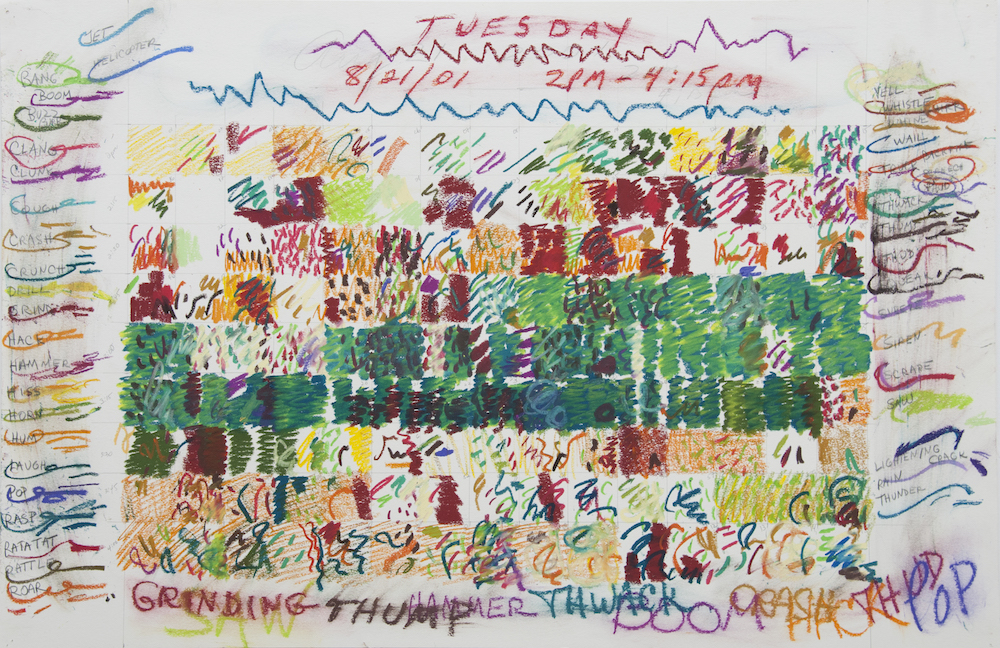
Rosemary Mayer. Untitled (8/21/01, 2PM-4:15PM) (2001). Image courtesy the Estate of Rosemary Mayer and Gordon Robichaux, New York
Gallery affiliation: Gordon Robichaux (New York) and ChertLüdde (Berlin)
Best known for: Large-scale sculptures made from fabric and a series of ephemeral outdoor installations called “Temporary Monuments,” both from the 1970s. (Examples are on view at the first-ever survey of her work at the Swiss Institute in New York.) “Greater New York” is presenting Mayer’s “noise drawings,” maps of different noises she heard from her New York studio. She was also a co-founder of A.I.R. Gallery, the legendary women’s cooperative in New York.
Most wanted: Her fabric sculptures are probably the most recognizable and significant for an institutional buyer. (In 2020, Lenbachhaus in Munich acquired one.) But her drawings, like those featured in a spring 2021 show at Gordon Robichaux, are equally central to her practice—and a little more practical.
Price points: Works on paper range from $15,000 to $50,000.
Up next: The Swiss Institute survey will travel to Europe in 2022, stopping at Ludwigforum, Aachen, Lenbachhaus, Munich, and Spike Island, Bristol.
Little-known fact: Raised in Ridgewood, Queens, and based in Tribeca for most of her life, Mayer is a quintessential New York artist who had extremely cool friends like Ree Morton and Adrian Piper.
—Eileen Kinsella
Raque Ford (b. 1986)
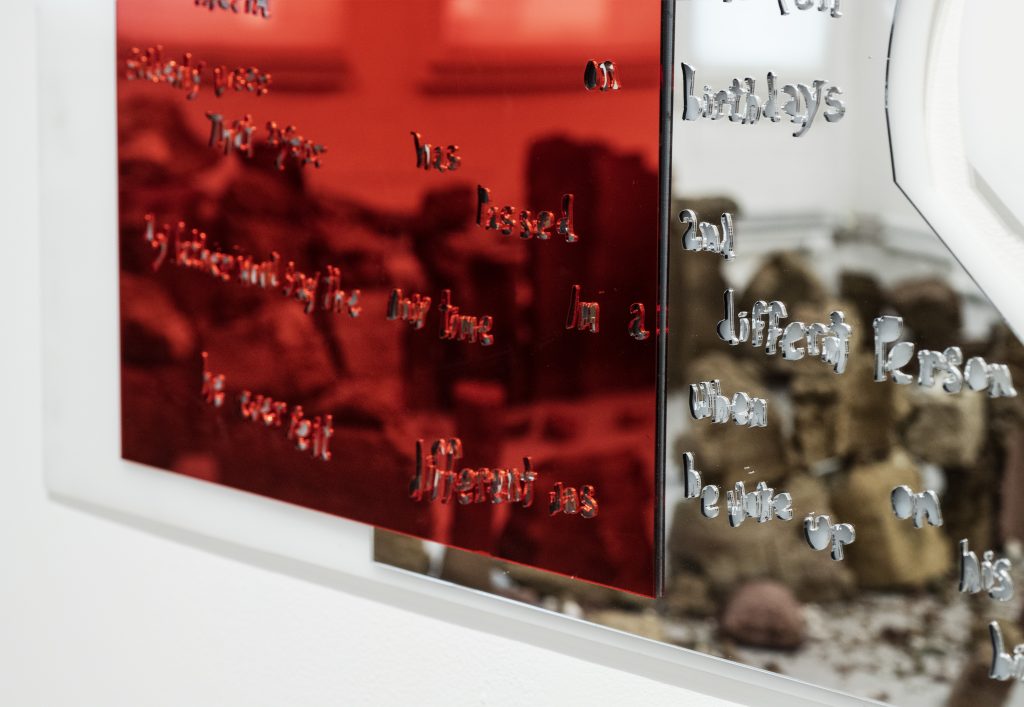
Detail of a work by Raque Ford at Greater New York. Image courtesy MoMA PS1. Photo: Martin Seck
Gallery affiliation: Greene Naftali, New York
Best known for: Art that blends painting and sculpture, from acrylic wall works inscribed with song lyrics and fan letters to installations that present painted plexiglass hung between steel chains.
Most wanted: Her latest and perhaps most recognizable work is a series of acrylic sheets layered and carved with text. The works on view at MoMA PS1 contain reflections on two graveyards near her mother’s hometown in Arkansas.
Price points: $8,000 to $15,000
Up next: Her first solo show at Greene Naftali is scheduled for March 2022.
Little-known fact: Ford often incorporates plexiglass found on the street into her work, leaving the stains and scuffs in place. She once created a dance floor out of plexi and encouraged visitors to leave their own trace behind on the surface.
–Katya Kazakina
Yuji Agematsu (b. 1956)
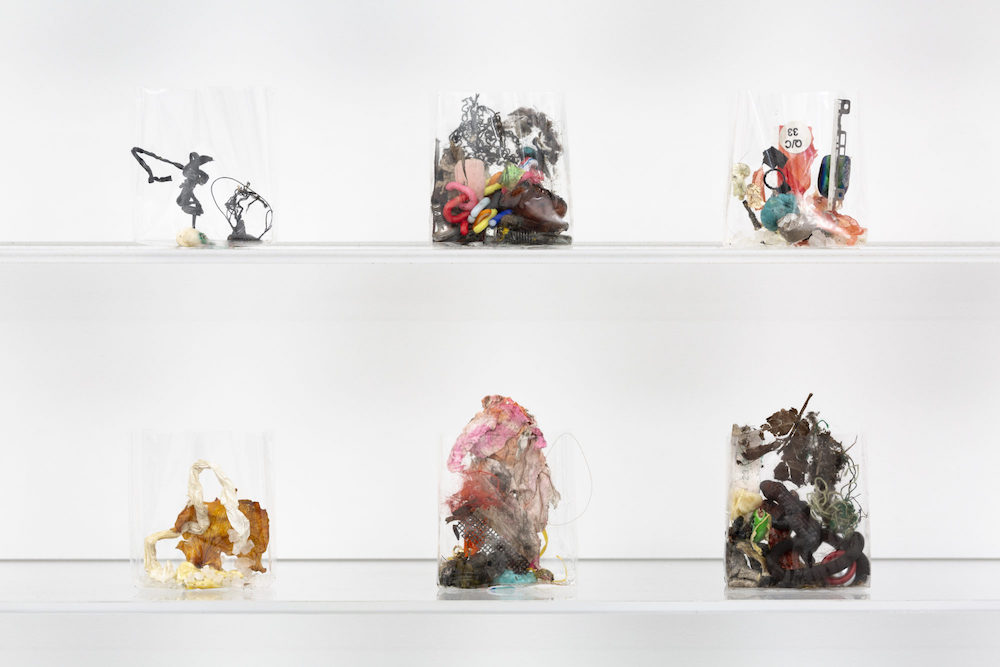
Yuji Agematsu, zip: 01.01.20 . . . 12.31.20. (2020). Image courtesy the artist and Miguel Abreu Gallery, New York. Photo: Stephen Faught
Gallery affiliation: Miguel Abreu Gallery, New York
Best known for: Tiny sculptures in cellophane cigarette casings packed with ambitious, energetic, and precise compositions created with trash found on the streets of New York City. Each assemblage-style sculpture (which he calls “zips”) is named after the date the artist picked up the street detritus, creating a timestamp of a certain moment in the city.
Most wanted: The “zips” have gained Agematsu wide recognition, including frequent comparisons to On Kawara’s time-stamped paintings. However, the artist was for a long time a prolific photographer, eventually giving up the craft as he shot more than he could develop and process.
Price points: A principal with a gallery staunchly refused to reveal even a range because he said people have balked at spending so much on, well, literal trash. The artist’s collectors—who happen to include Lonti Abrams and Francois Pinault—”know what they’re worth,” the dealer added.
Up next: Agematsu is set to receive a solo show with Galería Marta Cervera in Madrid, Spain, later this year, and his work is on view currently at “How Long Is Now” at Jerusalem’s Israel Museum.
Little-known fact: Agematsu studied art with jazz drummer and choreographer Milford Graves, who was also a prolific sculptor.
–Annie Armstrong
Paulina Peavy (1901–99)
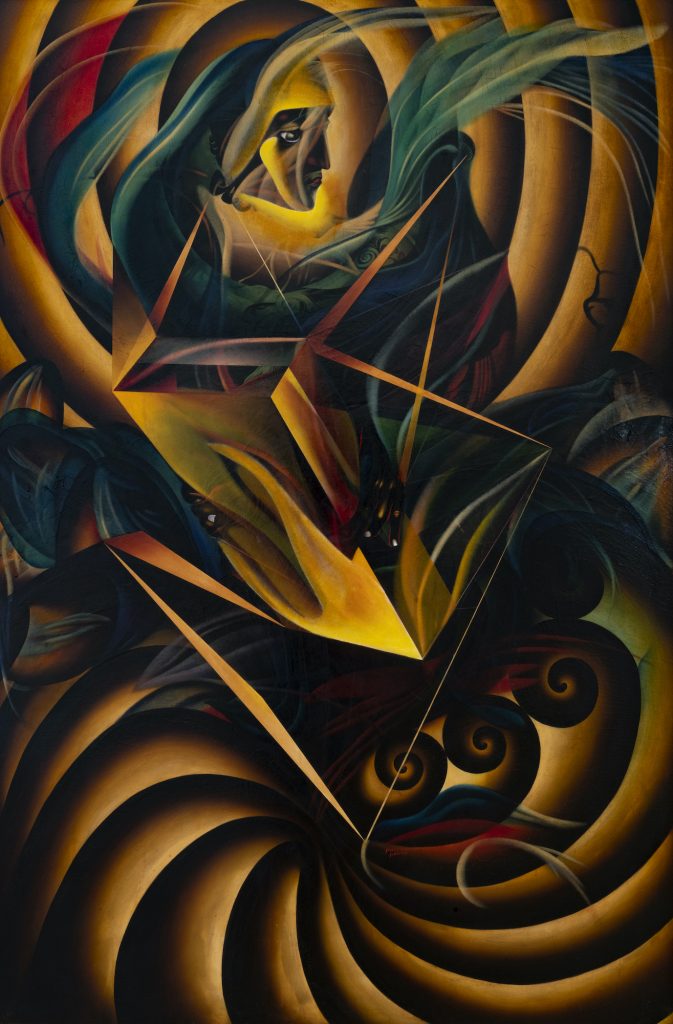
Paulina Peavy, Untitled (1938–47). Courtesy Andrew Edlin Gallery, New York.
Gallery affiliation: Andrew Edlin (New York)
Best known for: Technically masterful paintings, watercolors, and sculptural masks whose subject matter merges the cosmic and the spiritualistic in a manner as distinctive as Peavy did in her life beyond the studio. In 1932, Peavy attended a seance in Los Angeles where she believed she connected with a UFO imbued with a presence named Lacamo, whose complex cosmology she then spent the rest of her years attempting to communicate to viewers through her art, writings, and films. (Asked to summarize Peavy’s work for an interested neophyte, Andrew Edlin described her aesthetic as “Hilma af Klint meets Agnes Pelton.”)
Most wanted: “There is no one body of work that outshines the others,” according to Edlin (who exclusively represents Peavy’s estate). Demand is healthy even for her masks—which the artist created as instruments to help her more perfectly conduct Lacamo’s energy while she worked.
Price points: Works on paper and masks range from $7,500 to $15,000 each. Oil paintings stretch from $15,000 to $60,000 each, with a handful of very large canvases exceeding $100,000.
Up next: Edlin will feature Peavy’s work in his booth at this year’s Art Basel Miami Beach. The gallery is also hard at work on a monograph that will include “extensive research” contextualizing Peavy with her fellow artists in the California scene and the program of L.A.’s Stendahl Galleries, such as Hans Hofmann.
Little-known fact: One plank in Peavy’s Lacamo-based belief system was that, in its ultimate evolutionary form, humanity would consist of only a single androgynous gender, whose biological components she sometimes represented in her work.
–Tim Schneider
Andy Robert (b. 1984)
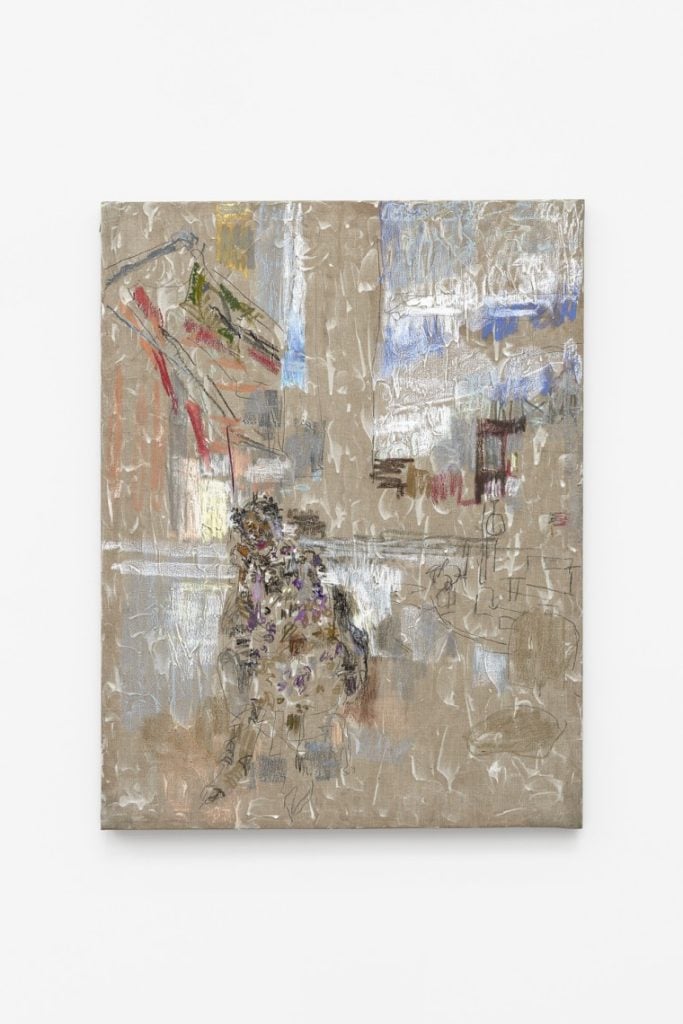
Andy Robert, Thelma Golden (2017). Photo by Veli-Matti Hoikka. Image courtesy Hannah Hoffman Gallery.
Gallery affiliation: Hannah Hoffman, Los Angeles
Best known for: Large-scale abstract paintings that are inspired by nights in his Harlem neighborhood, which he calls “the Black metropolis.” The muted color palette combined with his frenetic brushwork evoke the sensation of New York evenings, when street sounds become white noise. He takes photographs of 24-hour diners, currency exchanges, street performers, and other icons of quotidian city life to use as source material.
Most wanted: His paintings can take years to complete, making them both extremely desirable and very hard to come by. (Examples are in the collections of couple Marie-Josée and Henry R. Kravis, the Hammer Museum, and the Studio Museum in Harlem.) He also makes works on paper.
Little-known fact: Roberts has won basically every coveted residency or fellowship there is to win as an American artist, including the Pollock-Krasner Foundation artist grant (2020); the MacDowell Colony Fellowship (2020); the Studio Museum Harlem Artist-in-Residence (2016–2017); and the Skowhegan School of Painting and Sculpture Residency (2016).
–Annie Armstrong
